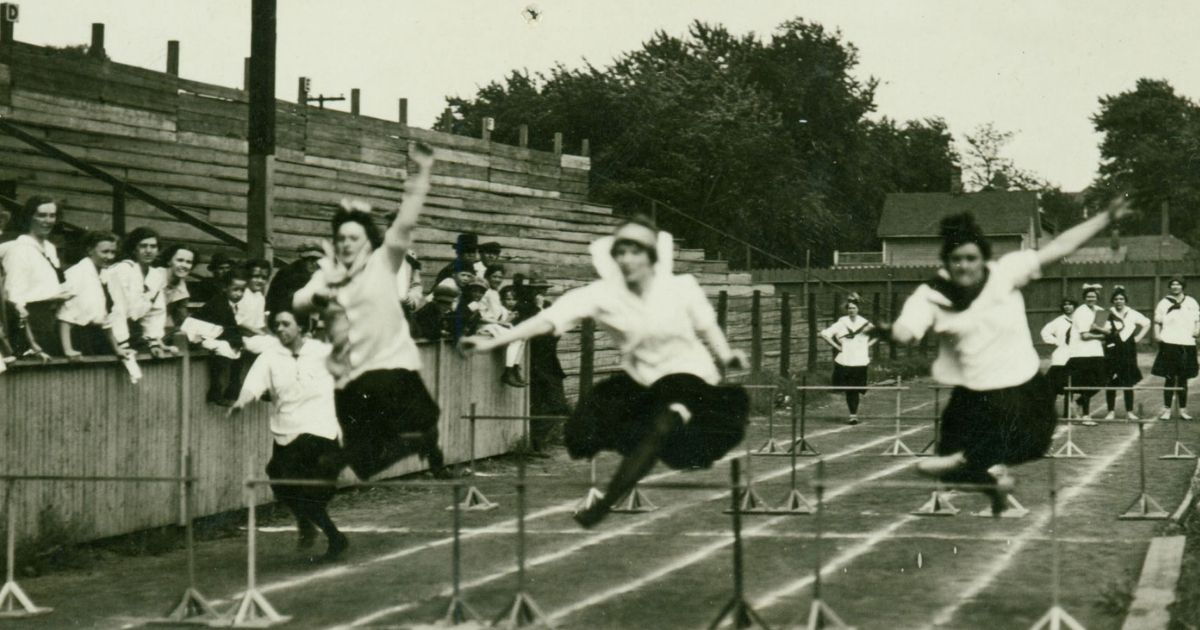Nebraska Women’s Sports: History in the Making
The Nebraska women’s sports community is only growing stronger each year, and with good reason; with excellent teams and dedicated athletes, Nebraska positions itself as one of the strongest states for women’s sports.
However, this success was not an overnight win; it’s been building for quite some time. Women’s sports in Nebraska have a rich history of resilience, discipline, and talent.
Today, we travel to the past, to Nebraska’s sports beginnings, to understand how these talented athletes have built their success through the years and to imagine the bright future that awaits them.
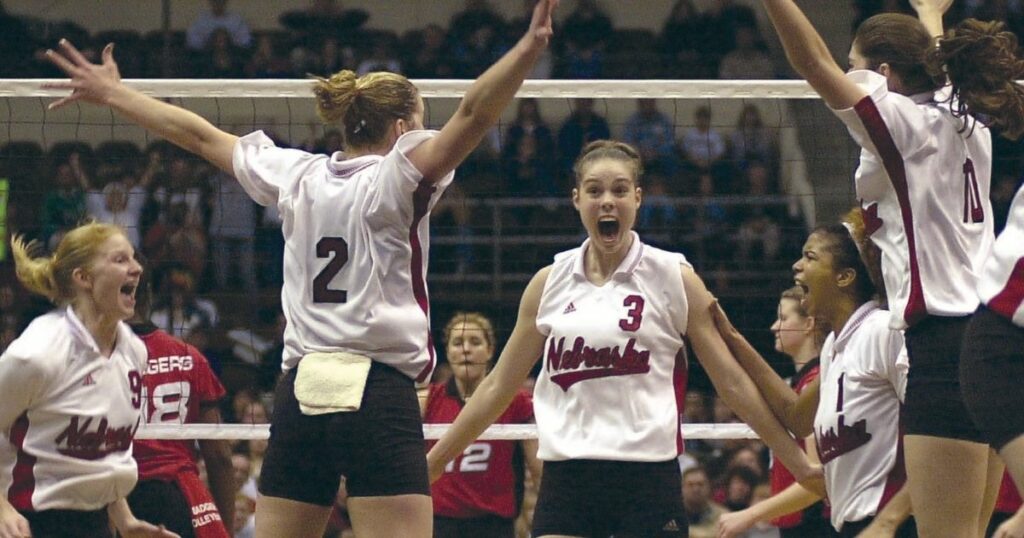
Nebraska Women’s Sports History
The story of women’s sports in Nebraska mirrors a familiar narrative seen around the globe. Initially, the sports scene was dominated by men, leaving little room for women to engage in athletic pursuits.
However, between 1880 and 1890, collegiate sports began to take root and gain popularity within Nebraska’s universities. It wasn’t until around the turn of the century, circa 1900, that women began to carve out their own niche in athletics, forming groups that were somewhat dismissively termed “Minor Athletics.”
Naturally, the landscape of sports has transformed dramatically over the past century.
Back then, women’s athletic attire prioritized modesty over performance, making it far from ideal for competition or physical activity.
Photographs from the era highlights this disparity: men were often captured in dynamic, in-game moments, exuding energy and enthusiasm. In stark contrast, women’s team photos were formal and restrained, with little to no indication of the sports equipment they used.
Despite these challenges, women’s sports teams at the University of Nebraska-Lincoln began to flourish, gradually establishing a strong presence and creating a legacy that continues to evolve today.
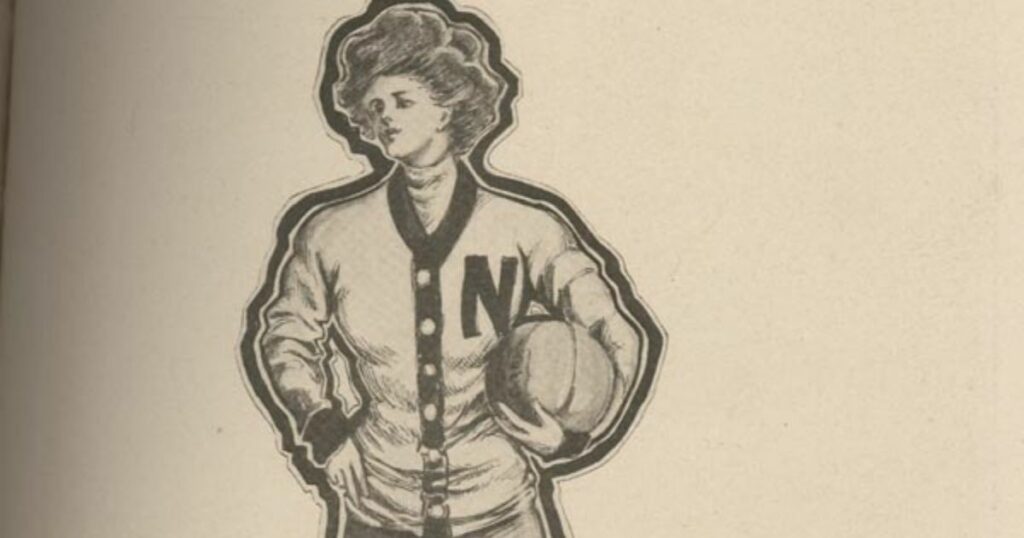
Intercollegiate Competition: The Beginning of Nebraska Women’s Sports
The dawn of women’s intercollegiate competition marked a pivotal moment in the history of Nebraska’s sports.
Nebraska’s teams were not alone; across the country, women’s sports teams were emerging, fueled by determination and a passion for competition.
As these teams ventured into the competitive arena, they began to participate in intercollegiate matches, quickly establishing themselves as formidable opponents. Their skill and dedication were undeniable.
In a landmark event in 1901, the University of Nebraska-Lincoln (UNL) women’s basketball team took to the court for their first intercollegiate game. In an impressive debut, they emerged victorious against the University of Missouri, setting the stage for a rich legacy of women’s sports in Nebraska.
The End of an Era: What Did the Future Hold for Women in Sport?
The journey of women’s sports in Nebraska reached a significant turning point in 1908 when, despite the excellence of the UNL team, the governing board decided to discontinue intercollegiate competitions for women.
This decision cast a long shadow over the future of women’s sports, effectively putting a halt to these competitions for nearly six decades. It seemed, for a time, that the vibrant history of women’s athletics might fade into obscurity.
However, the passion and determination for women’s sports didn’t completely vanish. Within the walls of universities, interclass games continued to thrive, providing a glimmer of hope and continuity.
As society evolved and attitudes towards women’s sports began to change, the sports community grew stronger and more resilient.
This resurgence of spirit and community eventually paved the way for the return of intercollegiate competitions for women, rekindling the flame that had been momentarily extinguished.
The enduring legacy of women’s sports in Nebraska, therefore, is a testament to perseverance and the unyielding desire to break barriers and redefine possibilities.
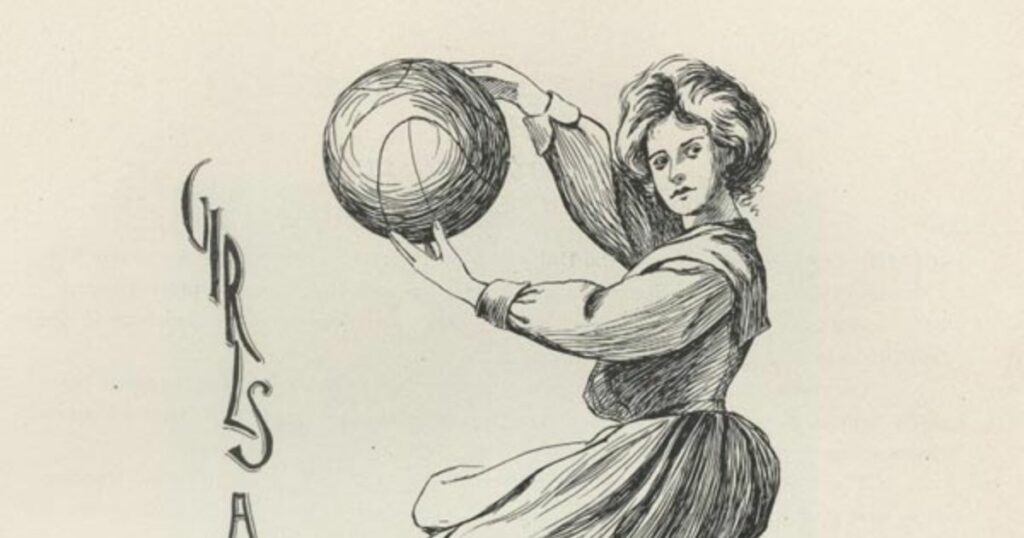
UNL Women’s Athletic Association
The founding of the Women’s Athletic Association (WAA) in March 1917 marked a significant milestone in the history of women’s sports at the University of Nebraska-Lincoln (UNL) and beyond.
Spearheaded by physical education instructors Dorothy Baldwin and Jessie Beghtol Lee, the WAA played a crucial role in promoting and overseeing athletic competitions for women.
The establishment of the WAA was not just about organizing sports events; it was a movement towards recognizing and valuing women’s athletic achievements.
By implementing a system of awards for successful competitors, the association underscored the importance of women’s sports and encouraged participation and excellence.
The legacy of the WAA continues to influence the world of women’s sports today, serving as a testament to its enduring impact on fostering and advancing athletic opportunities for women.
The Return Of Intercollegiate Athletics
The revival of intercollegiate athletics for women in Nebraska on April 22, 1967, marked a pivotal moment in the state’s sports history. This day saw representatives from colleges and universities across Nebraska come together to discuss the creation of a league dedicated to women’s intercollegiate sports.
The outcome of this meeting was the formation of the Nebraska Women’s Intercollegiate Sports Council (NWISC), a monumental step in reinvigorating women’s athletics in the state.
This development was significant for several reasons.
Firstly, it showcased a unified commitment among Nebraska’s educational institutions to support and enhance women’s sports, a commitment that had been sporadic since women’s intercollegiate competitions were halted in 1908.
Secondly, the NWISC played a crucial role in bringing women’s sports into the public eye by organizing state tournaments, which in turn boosted participation and interest in women’s athletics.
Looking back at the broader history of sports in Nebraska, the 1920s and 1930s were notable for the formation of women’s teams across various schools. However, these early forays into women’s team sports were often overshadowed by more established men’s sports like basketball and track.
During this period, women’s sports were largely seen as recreational rather than competitive, with formal matches being a rarity.
Despite these humble beginnings, the efforts of organizations like the NWISC and the foundational work in the early 20th century laid the groundwork for Nebraska to become a formidable presence in women’s collegiate sports.
The state’s commitment to developing and promoting women’s athletics has contributed significantly to its reputation as a powerhouse in the sports arena.
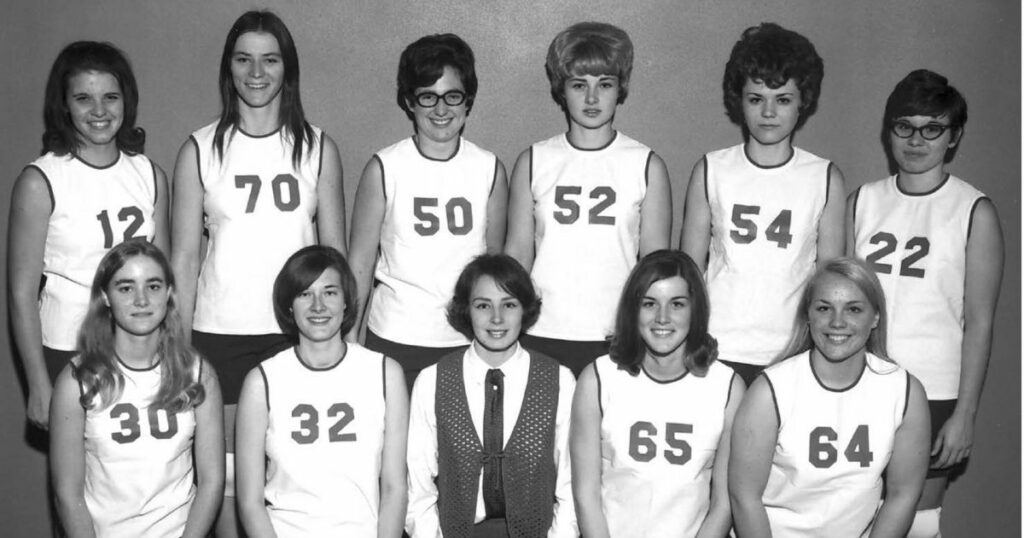
UNO Softball
The rise of intercollegiate competition in Nebraska saw a significant surge in interest and participation in women’s sports, leading to the establishment of more teams across the state.
This interest set the stage for a momentous achievement in Nebraska’s sports history.
In 1975, during the AIAW Women’s College World Series, the women’s softball team from the University of Nebraska Omaha (UNO) showcased their talent and determination. In a thrilling deciding game, they emerged victorious over Northern Iowa with a score of 6-4.
This victory was not just a win; it was a historic moment for UNO, as it secured the university’s first-team national championship.
This achievement underscored the growing prominence and potential of women’s sports in Nebraska, marking UNO’s softball team’s victory as a landmark event in the state’s rich sports history.
Nebraska Women’s Sports Teams Finding Their Own Space
Despite the growing popularity and success of women’s sports, the journey towards equality in Nebraska was fraught with challenges. The 1990s highlighted the disparities that still existed between men’s and women’s sports teams, particularly in terms of resources and recognition.
Space Constraints
As late as 1995, women athletes at Nebraska universities faced significant logistical hurdles. They lacked dedicated spaces for their teams, resulting in shared lockers and dressers with other teams. This lack of space forced them to transport and manage their equipment without the convenience of on-campus storage.
Access to facilities was another issue, with parking at stadiums often reserved exclusively for men’s events. Furthermore, women’s teams were required to set up their own playing fields and arrange seating before competitions.
Media Representation
The disparity extended into media coverage.
Major media outlets focused predominantly on men’s sports, especially football, leaving women’s sports, such as volleyball, in the shadows.
This lack of visibility not only marginalized women’s sports but also diminished the recognition of female athletes’ achievements and efforts.
Strides Towards Equity
Determined to bridge this gap, athletes, coaches, and supporters advocated for more equitable treatment and media representation.
Their efforts culminated in a significant victory in 1999 when local radio station 107.3 agreed to broadcast women’s volleyball games.
This decision allowed for both football and volleyball matches to be aired simultaneously on different channels, offering women’s sports much-needed exposure and recognition.
This moment was a critical step towards addressing the gender disparities in sports media coverage, highlighting the ongoing struggle for equality and the importance of visibility in advancing women’s sports.

2009: The Time for Women’s Basketball
As the 2000s progressed, the Nebraska Huskers women’s basketball team was making notable strides in the NCAA Tournament, demonstrating their prowess by qualifying in two of the previous three seasons.
Yet, it was the 2009-10 season that would etch their name in the annals of collegiate basketball history.
Under the guidance of Head Coach Connie Yori, the Huskers embarked on a remarkable journey. They not only participated in the games; they dominated them, achieving an impeccable record throughout the regular season. This string of victories was not just a testament to their skill and hard work but also a clear sign of the team’s synergy and Yori’s leadership.
The crowning achievement of this extraordinary season was securing the Big 12 regular-season championship for the second time in the team’s history.
This accomplishment was more than just a win; it was a statement. It marked the Nebraska Huskers women’s basketball team’s arrival as a force to be reckoned with and set a new benchmark for what the team could achieve.
The 2009-10 season remains a high point in the team’s history, symbolizing not just their talent and determination but also the potential for future success in women’s basketball.
The Weight of Volleyball for Women Sports in Nebraska
Volleyball has undoubtedly been a cornerstone in establishing Nebraska as a trailblazer in women’s collegiate sports in the United States.
The Nebraska Huskers volleyball team, known for its exceptional talent and competitive spirit, has consistently made waves on the national stage, further cementing their legacy in the sport.
In a strategic move that would redefine their future, the University of Nebraska-Lincoln decided in 2010 to leave the Big 12 Conference, a partnership that had lasted fifteen years.
This decision was not taken lightly, considering the Cornhuskers’ dominant performance in the Big 12, where they left an indelible mark by winning the championship in 2010 with an impressive conference record of 278 wins to just 22 losses.
Transitioning to the Big Ten Conference in 2011 opened a new chapter for the University of Nebraska, allowing its athletic teams to compete against other storied programs like Penn State, Minnesota, Wisconsin, and Illinois.
This move was particularly significant for the volleyball team, which quickly proved its mettle by winning the Big Ten championship in their very first year in the conference.
The Huskers’ volleyball success significantly boosted the sport’s popularity in Nebraska, culminating in 2013 when the renovated Nebraska Devaney Center sold nearly 8,000 season tickets. This overwhelming support led the nation in attendance, with an average of 8,175 fans per match, showcasing the community’s passion and support for women’s volleyball.
This era not only highlighted the Huskers’ competitive excellence but also underscored the vital role volleyball plays in promoting women’s sports in Nebraska and beyond.
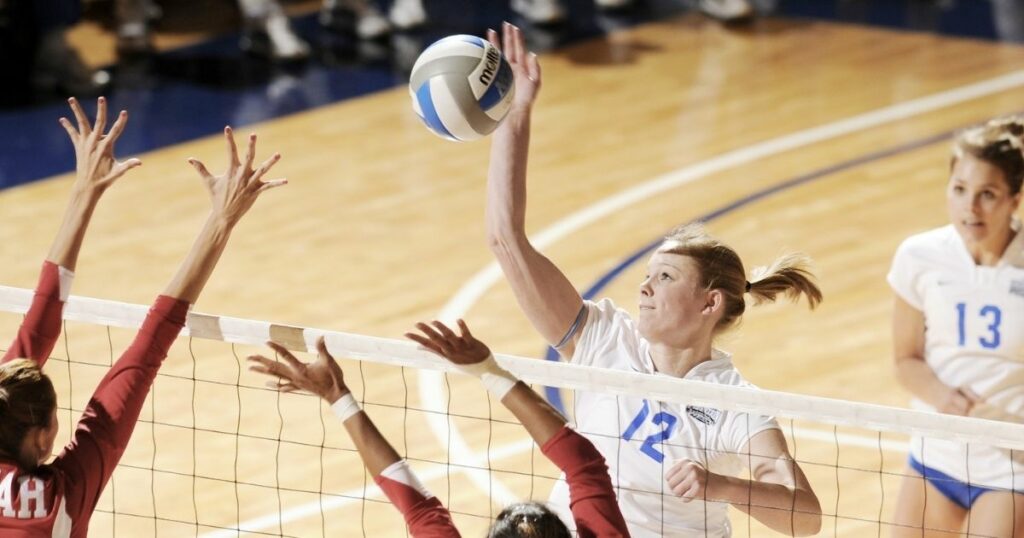
2023 Nebraska’s World Record
In an unprecedented display of support for women’s sports, Nebraska shattered the world record for attendance at a women’s sporting event in 2023.
A staggering crowd of 92,003 spectators filled Memorial Stadium, all gathered to watch the powerhouse Nebraska volleyball team, a five-time NCAA champion, take on the Omaha Mavericks. The match ended in a resounding 3-0 victory for the Nebraska Huskers team.
This momentous occasion eclipsed the previous world record for a women’s sports event attendance, which was set during the Women’s World Cup soccer final between Team USA and China, witnessed by 90,185 fans at the Rose Bowl in Pasadena, California.
The significant turnout for the volleyball match in Nebraska not only etched a new chapter in the history books for women’s sports in Nebraska but also highlighted the increasing popularity and support for women’s sports nationwide.
This record-breaking event serves as a testament to the passion and enthusiasm that fans have for women’s sports, marking a significant milestone in the journey towards greater recognition and equality in sports.
The Future of Nebraska Women’s Sports
Looking ahead, the trajectory for women’s sports at the University of Nebraska-Lincoln (UNL) is set on an upward curve, promising even more achievements and milestones.
The remarkable progress and accomplishments witnessed in recent years signify just the beginning of what’s possible as UNL remains committed to elevating its female athletes and sports programs to global acclaim.
The university’s ongoing efforts to recruit elite talent from across the nation and around the globe are a testament to its dedication to excellence in women’s sports.
By offering state-of-the-art training facilities, a cadre of seasoned coaches, and a nurturing environment, UNL is not just attracting top-tier athletes; it’s crafting an ecosystem where these athletes can flourish and push the boundaries of their capabilities.
This investment in the future of women’s sports at UNL is not merely about maintaining competitive teams; it’s about building a legacy of empowerment, excellence, and equality.
As these efforts continue to unfold, the future for women’s sports at the University of Nebraska-Lincoln shines bright, promising a new era of achievements, records, and global recognition.
Nebraska Has Talent
Nebraska’s commitment to enhancing its women’s sports programs reflects a broader goal of fostering diversity and inclusivity within athletics.
By continuously seeking to broaden the range of sports available to female athletes, Nebraska not only creates more opportunities for participation but also enriches the sports culture with a wider array of talents and perspectives.
This expansion is crucial for accommodating the diverse interests and abilities of female athletes, ensuring that every aspiring sportswoman finds her place in the competitive world of athletics.
The influence of Nebraska’s women’s sports teams transcends the boundaries of competition and athletic achievement. These athletes stand as beacons of inspiration, showing young girls that their aspirations in sports and beyond are valid and achievable.
Their success stories and journeys to excellence in their respective fields serve as powerful motivation that encourage the next generation to chase their dreams with vigor and determination.
At the Nebraska Greats Foundation, we look forward with anticipation to the unfolding future of women’s sports. The foundation is not just a spectator but a proud supporter of this journey, eager to witness and celebrate the milestones and triumphs that lie ahead.
As history continues to be written by these talented and determined women, their legacy will undoubtedly encourage more young girls to step into the world of sports, knowing that their dreams are within reach and that they, too, can become great.
The Nebraska Greats Foundation
This is where organizations like the Nebraska Greats Foundation step in. The foundation provides financial assistance and support to former letter-winning athletes from Nebraska’s colleges and universities who face significant medical expenses.
This support can be a lifeline for athletes dealing with the aftermath of sports-related injuries, helping them access the necessary medical care and rehabilitative services.
The Nebraska Greats Foundation recognizes that athletes often give their all on the court, sometimes at the cost of their health. By providing financial aid, the foundation ensures these athletes can lead healthier lives after their athletic careers.
It underscores the importance of caring for athletes’ health during their active years and beyond, emphasizing that their well-being is as important as the records they set and the games they win.
